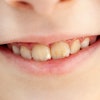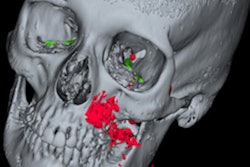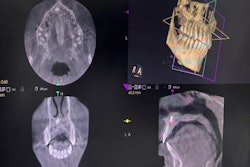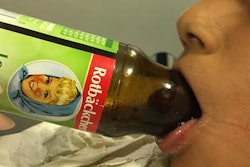
A 2-year-old boy fell while brushing his teeth, causing a blunt cerebrovascular injury (BCVI) to the pharynx, and leading to an ischemic stroke, according to a clinical note published July 28 in Pediatrics International.
The child remained paralyzed on the lower half of his body on the left side after treatment and a lengthy hospital stay, the authors wrote.
“Early diagnosis and treatment are crucial to prevent the development of cerebral infarction and other complications,” wrote the authors, led by Dr. Kento Kawakami, of the Children’s Medical Center, Yokohama City University Medical Center, Japan.
A 2-year-old boy unable to move
While brushing his teeth, a 2-year-old boy fell, and the brush became stuck in the posterior pharynx. Once the toothbrush was removed, he showed no further symptoms, so he was not taken to the hospital, according to the note.
On the following morning, the boy’s parents noticed that he could not move his left upper and lower limbs and the left side of his face. This triggered them to take the boy to a nearby dentist. The clinician examined the child’s toothbrush wound and found no problems, the authors wrote.
The next day, the boy developed dysarthria. He was taken to a hospital and underwent a computed tomography (CT) scan. Imaging showed suspected cerebral infarction, and he was transferred to another hospital.
During a physical exam, he registered a 12 on the Glasgow Coma Scale and had mild swelling over the right jaw to the neck. A neurological exam revealed muscle weakness and pyramidal tract sign on his left side. A clinician saw only a small scar in the right retromolar region, which appeared to be an abrasion caused by the toothbrush, the authors wrote.
Contrast-enhanced CT and computed tomography angiography (CTA) showed air contamination in the interspace of the pharynx, which suggested that the toothbrush had penetrated the oral cavity and reached the area of the internal carotid artery. Magnetic resonance angiography (MRA) of the head and neck revealed a cerebral infarction, as well as interruption of the right carotid artery and the right middle cerebral artery. Other diagnostics, including an echocardiograph, showed no cause for brain infarction, they wrote.
Therefore, he was diagnosed with ischemic stroke associated with blunt cerebrovascular injury due to intraoral blunt trauma with a toothbrush. To prevent the lesion from expanding, the boy was admitted to the intensive care unit and was treated with aspirin, edaravone, and antibiotics.
Follow-up imaging showed no serious complications like pseudoaneurysm formation, hemorrhage infarction, cerebral hernia, or abscess formation. On the 26th day of his stay in the hospital, the boy was discharged. The lower part of his body on the left side remained paralyzed, the authors wrote.
Common accident needs close attention
Falling with stick-shaped objects in the mouth is one of the most common causes of intraoral injuries in children, especially infants and toddlers. Sometimes objects, including toothbrushes, can injure blood vessels without directly reaching them. Blunt trauma in the oral cavity can result in immediate and local hyperextension of the internal carotid artery, resulting in occlusion or thrombus formation.
The development of symptoms may vary. They can occur when the thrombus is formed or when the blood clot reaches distally from the internal carotid artery. It can take three to 60 hours from the time of the injury for symptoms to appear.
CTA and MRA are used to screen adults with suspected blunt cerebrovascular injury. Some screening criteria have been examined for blunt cerebrovascular injuries in children; however, they may not be relevant for minor oral injuries. This along with the delayed onset of symptoms can make diagnosis difficult in pediatrics.
Therefore, children with oral injuries may require close follow-up or hospitalization for at least three days, Kawakami et al wrote.
“In this case, poor comprehension of the fact that BCVI occurs with time after injury led to a diagnostic delay,” they wrote.




















